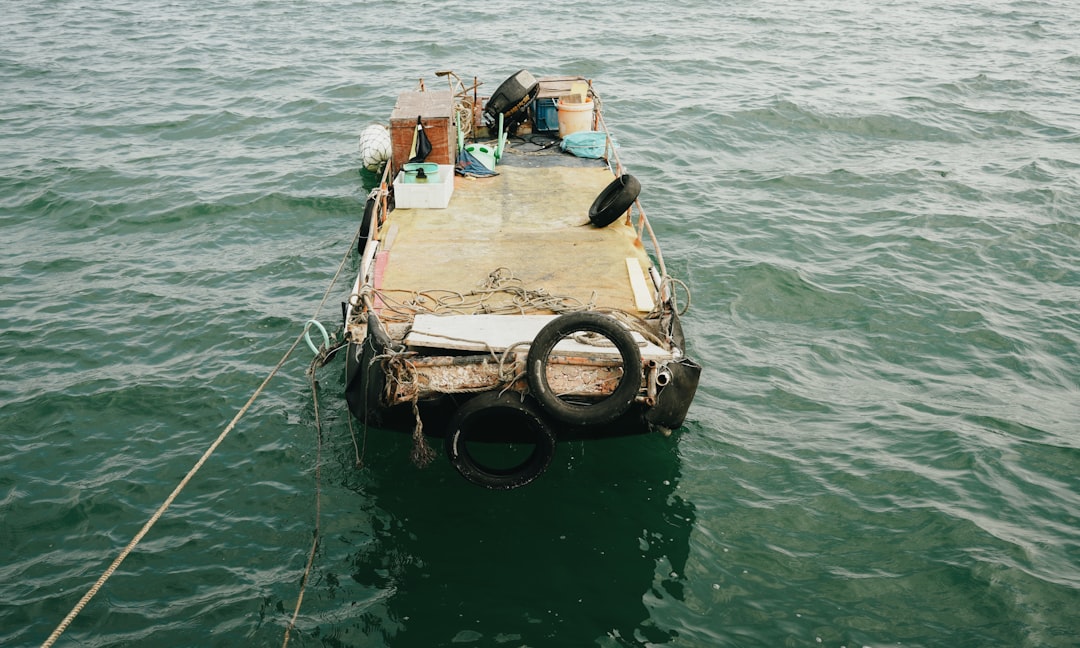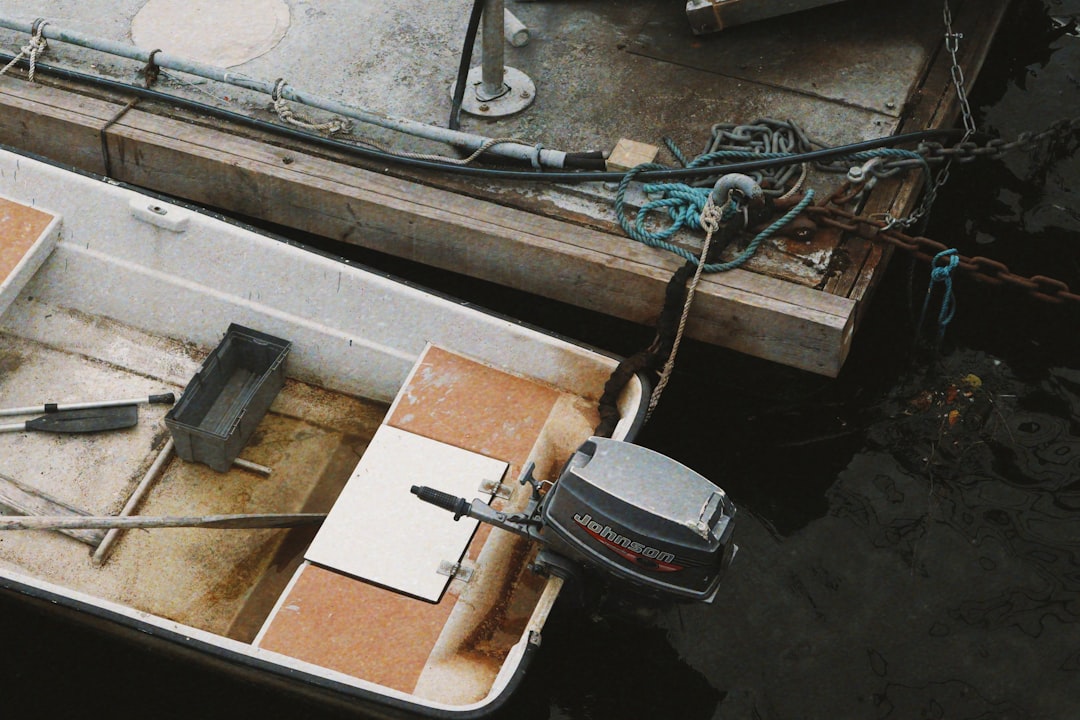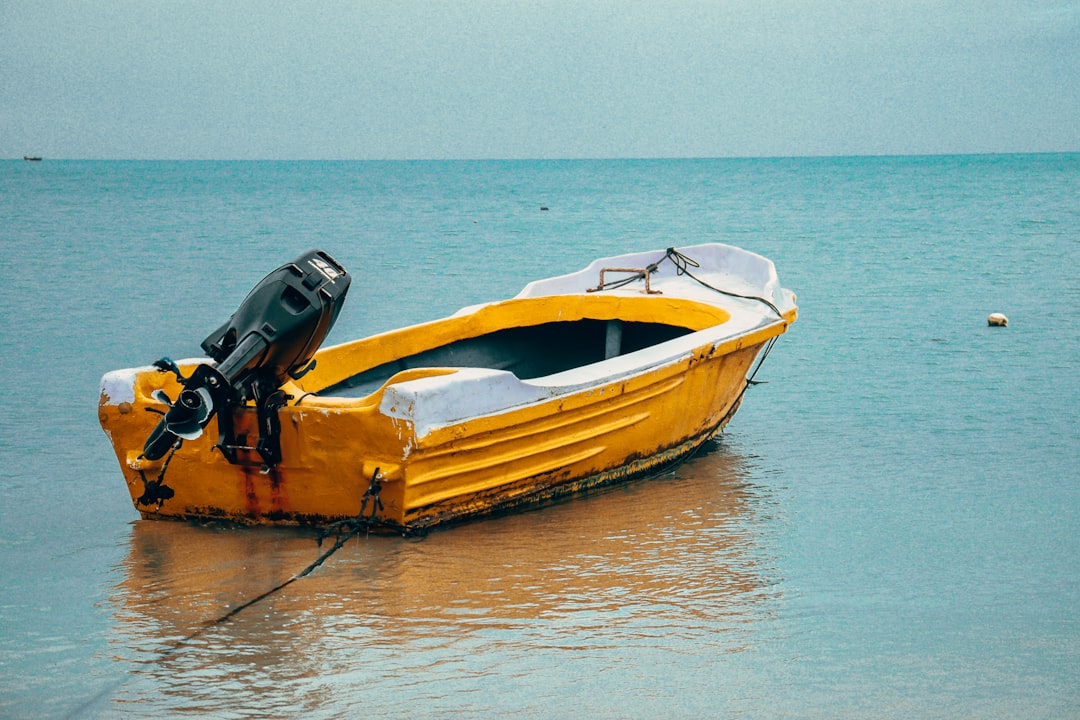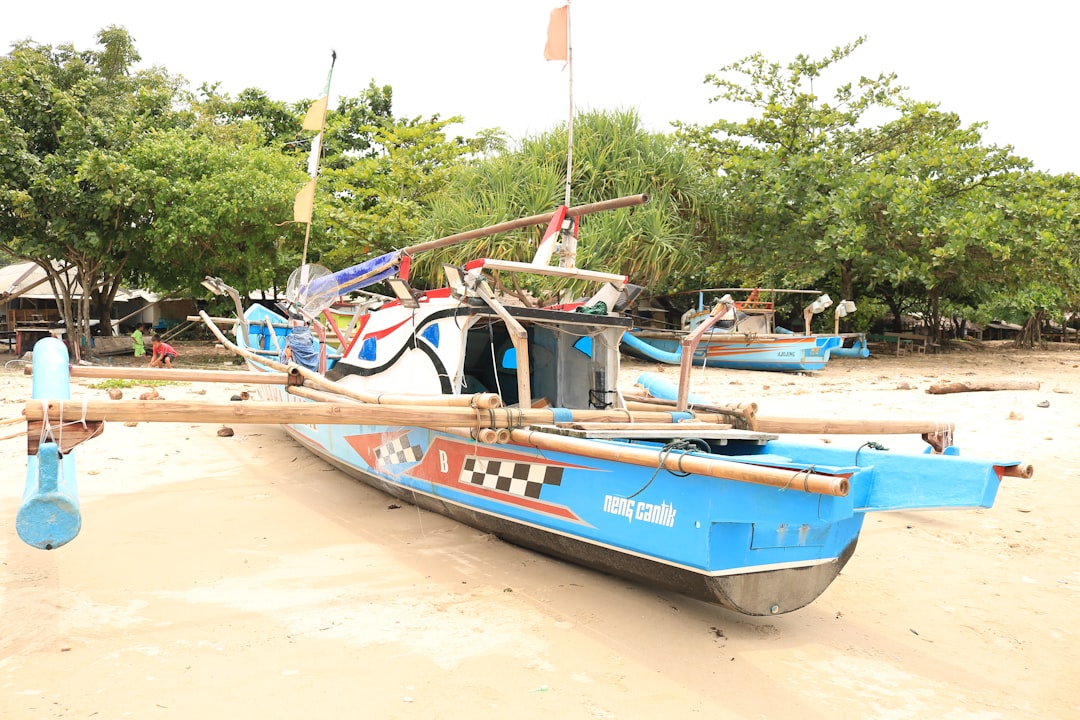

Engage prospects with a scan and streamline customer engagement with FREE QR code marketing tools by Sona – no strings attached!
Create a Free QR CodeFree consultation

No commitment

Engage prospects with a scan and streamline customer engagement with FREE QR code marketing tools by Sona – no strings attached!
Create a Free QR CodeFree consultation

No commitment
Watercraft repair services are navigating a period of rapid digital transformation as boating and marine recreation surge in popularity. From routine boat maintenance to emergency repairs and yacht servicing, today’s customers expect a seamless, responsive experience from their chosen repair shops or marine mechanics.
QR codes in marketing are uniquely positioned to address these pain points by bridging critical gaps between offline touchpoints such as signage, invoices, boat documentation, or direct mail and digital experiences. For example, many watercraft repair shops find that prospects research services extensively but leave without submitting a form or making direct contact, leaving those high-intent visitors untracked and unconverted.
Replacing manual forms with actionable QR shortcuts empowers both staff and customers: repetitive paperwork becomes automated, scheduling friction is reduced, and actionable data flows directly into service workflows. As a result, repair shops can enhance satisfaction and transparency while tracking every meaningful engagement throughout the repair journey. Discover how strategic QR code deployment can solve real-world challenges in watercraft repair, unlocking workflow efficiency, stronger customer relationships, and marketing that delivers measurable business growth.

One central frustration for watercraft repair businesses is the difficulty of turning offline encounters, whether on the dock, in the shop, at a marina, or during a service call, into actionable, trackable leads. Traditional brochures, paper intake forms, and appointment cards often fail to capture high-intent visitors, leaving businesses with incomplete data and missed follow-up opportunities. This analog friction is particularly costly in marine environments where customers are frequently on the move, lack a stable internet connection, or have limited time on site.
By embedding QR codes onto estimates, signage, repair tags, work orders, or invoices, businesses can eliminate friction points and transform every customer interaction into a measurable event. A strategically placed QR code can turn a curious passerby at the dock into a booked appointment, or convert a post-service handoff into a five-star review and a scheduled follow-up. This allows customers to:
Smart repair shops replace clipboards and carbon copy forms with QR-enabled digital intake flows. For example, a QR on the front counter can launch a pre-filled service check-in form that captures boat make, model, engine type, trailer details, and consent to text updates. Field techs can affix QR-coded job tags to vessels, enabling customers to check progress, approve change orders, or pay deposits in a few taps. Some innovative teams pair QR scan events with real-time analytics and CRM enrichment through platforms like Sona QR, which means prospects who do not complete forms can still be recognized, segmented, and nurtured based on scan behavior and visit context.
Defining success upfront is crucial. Identify target metrics for each touchpoint, such as scan-to-book rate for dock signage, average time to appointment confirmation from counter QR codes, or claims submission times after storm events. Linking scans to actual outcomes helps you optimize creative, placement, and follow-up flows. Over time, you will replace high-friction analog steps with digital shortcuts that drive measurable gains in conversion speed, customer satisfaction, and revenue predictability.

A recurring challenge for marine service providers is the lack of visibility into the anonymous traffic that interacts with their physical and print assets. Without a way to connect dock signage, window decals, postcards, or boatyard banners to digital follow-up, potential leads often remain unknown. This blind spot makes it difficult to forecast demand, staff appropriately, or prioritize high-intent prospects for rapid follow-up, and it can make campaign spend inefficient.
QR codes address this disconnect by digitizing every customer encounter. When scanned, a code can launch a booking form, a video library, a parts catalog, or a claims workflow. More importantly, each scan generates a time-stamped, geo-tagged signal that can be associated with a specific campaign, location, or creative. This gives teams the data they need to reallocate budget, refine messaging, and double down on placements that consistently produce booked jobs or paid estimates.
As consumer behavior shifts toward instant mobile actions, the shop that makes the next step obvious and effortless will win. QR codes create that onramp, ensuring your print and physical presence is not a dead end but a gateway to action, data, and revenue.

Watercraft repair operations juggle a wide range of interactions: inbound inquiries, diagnostic check-ins, part orders, warranty claims, storm response, and seasonal maintenance reminders. Without standardized QR patterns, this diversity can lead to one-off links, inconsistent data capture, and lost context. Adopting a set of common formats helps unify your approach and ensures that each scan triggers the right digital flow.
Dynamic QR codes are particularly valuable in marine settings where conditions change quickly. If a hurricane disrupts normal operations, you can switch all “Book Now” codes to a “Storm Response” hub with service advisories, claims links, and priority contact information in minutes, ensuring your entire footprint adapts without waste.

Growth comes from identifying the precise moments when customers are most ready to act and removing every unnecessary step. In watercraft repair, those moments often happen away from a desk: on the dock, beside a trailer, or at a marina store counter. Campaigns falter when print assets create awareness but fail to specify a fast digital next step.
Strategic placements convert those moments into measurable demand signals:
Where watercraft owners already linger, such as marine supply counters, yacht club boards, and trailer service yards, QR codes can deliver instant clarity about what to do next. The key is to match the call to action with the context: urgent repair for dock signage, scheduling for in-shop displays, and maintenance education for invoices or parts kits.

The best QR deployments address specific gaps in the customer journey and produce measurable, repeatable outcomes. In watercraft repair, a few use cases consistently stand out for driving engagement, conversion speed, and customer satisfaction.
By capturing micro-engagements across these touchpoints, shops boost satisfaction and operational efficiency while building audience lists of high-intent customers who may not convert immediately but are now identifiable for timely follow-up.
Each QR scan is a rich intent signal. It holds context about what the customer wants, where they scanned, and when they are most engaged. By deploying multiple QR codes across your dock signage, invoices, vans, and direct mail, you can automatically segment audiences and tailor follow-ups with precision.
Start by aligning codes with journey stages. For awareness, use QR-enabled banners at marinas and community boards that lead to educational content or introductory offers. For consideration, use codes on brochures and seasonal checklists that link to service explainers or estimate calculators. For conversion, place codes on pricing sheets, door signage, or abandoned estimate emails that route to a booking flow with saved preferences. Over time, this structure creates behavior-based audiences.
For watercraft repair specifically, design segments that mirror your customer base. Differentiate recreational boat owners from commercial operators, marina managers from DIY enthusiasts, jet ski renters from yacht owners, and offshore charter captains from lake anglers. Align your messaging to their needs: rapid turnaround and uptime guarantees for commercial accounts, seasonal packages for recreational owners, or safety-focused content for new boaters. When scan behavior meets relevant messaging, response rates climb and wasted touches decline.
Disconnected efforts across print brochures, social posts, and field staff can cause inconsistent messaging and missed opportunities. A unified QR strategy connects every channel to a single source of truth, reduces friction, and makes attribution straightforward. Each physical impression becomes a measurable digital touch that you can nurture.
Here are five practical integrations tailored to watercraft repair:
QR codes serve as the offline onramp to your digital marketing engine. With a centralized platform like Sona QR, you can manage all codes, monitor performance holistically, and sync scan data to your CRM and ad platforms. This closes the loop on campaigns that used to be hard to measure and gives you the agility to adjust while demand is hot.
Well-run QR programs follow a consistent process so teams can move quickly without sacrificing quality. Use the following steps to plan, launch, and improve campaigns that convert attention into booked jobs.
Begin by pinpointing your most pressing workflow gaps. Are you missing follow-ups after dockside inquiries, struggling with inefficient appointment booking at the counter, or dealing with incomplete insurance submissions after storms? Select one or two high-impact use cases so you can learn fast and iterate. Tie each to a clear business outcome: for example, increase scan-to-book conversions on dock signage by 20 percent, or cut claims intake time from 48 hours to 12 hours during hurricane season.
Define your success metrics and constraints. Decide how you will measure volume, conversion rate, and time-to-action. Identify the physical placements, audience segments, and seasonal factors that affect performance. If staffing is tight, prioritize a use case that reduces manual work, such as a QR-driven digital intake that exports to your CRM instead of hand-transcribed forms.
Match your use case to the right QR format. Static codes are fine for fixed destinations like your service menu or contact card. For anything that requires tracking, editing, or personalization, choose dynamic QR codes. Dynamic codes let you update destinations without reprinting, attach UTM parameters for attribution, and capture scan metadata like time, location, and device type.
Think through the landing experience as part of the “type” decision. If you need a pre-filled SMS for emergency towing, pick an SMS QR and craft a short template message that includes key prompts. If you need appointments, link to a mobile-friendly scheduling page that remembers returning visitors. With Sona QR, you can configure formats, add campaign tags, and set fallback links for scanners with limited connectivity.
Design for real-world marine conditions. Codes must scan under bright sun, at slight angles, and from a few feet away. Use sufficient contrast, a clear quiet zone, and a short URL behind the code to strengthen reliability. Add a benefit-driven caption and an unmistakable call to action near the code such as “Scan to Book a Dockside Repair” or “Scan to Upload Storm Photos.”
Before you print, test across devices, operating systems, and distances that match the placement context. Simulate glare at the fuel dock and movement on a windy day. Confirm that the landing page loads quickly on cellular connections and that form fields are large enough for thumb typing. With Sona QR, you can generate multiple design variations and run small A/B tests to see which creative drives higher scan and conversion rates.
Roll out your codes where they can influence decisions. For example, place large-format codes on dock banners and service vehicles for awareness and urgency, and add smaller codes to invoices, tune-up stickers, and parts packaging for retention and education. Assign unique codes per location and channel so you can compare performance and prune low-value placements.
Coordinate deployment with your seasonal calendar and partner network. During spring commissioning, prioritize maintenance education and scheduling codes. After severe weather, switch front-of-house codes to claims intake and storm response updates. Engage marinas, yacht clubs, and marine retailers with co-branded signage that includes their logos and a trackable partner code. This builds goodwill and makes attribution straightforward for both parties.
Do not stop at scan counts. Link scans to downstream actions like completed bookings, paid estimates, claims initiated, and reviews submitted. Analyze by channel, location, creative, and time of day to surface insights. If dockside banners at Marina A produce twice the scan-to-book rate of Marina B, investigate placement, messaging, or audience differences and adapt.
Use real-time analytics to respond to demand spikes. If scans surge during a heat wave or holiday weekend, adjust staffing and open additional appointment slots. A/B test calls to action, creative styles, and landing page content. Turn winning combinations into templates that you can deploy quickly across new locations. Sona QR and Sona.com streamline this loop by piping scan data to your CRM, enriching contacts, and tying touchpoints to revenue, so you can operate on facts rather than hunches.
A hidden cost in watercraft repair is marketing that cannot be connected to outcomes. You might sense that banners and postcards help, but without concrete data that links scans to booked jobs or claims, it is hard to prioritize spend. A modern QR data stack solves this problem by instrumenting every offline touch and unifying it with your digital journey.
By implementing a platform approach, repair shops can move from passive observation to active optimization. Scan data reveals which messages resonate, which placements deserve expansion, and which segments are most responsive to seasonal promotions. When that data flows into your CRM, every scan becomes a trigger for timely outreach and accurate forecasting.
The result is a performance feedback loop that makes offline marketing as measurable as digital. You spend with confidence, refine creative with evidence, and align the team around the actions that drive revenue.
Success with QR campaigns is rarely about technology alone. It depends on clarity of purpose, consistency in design, and discipline in follow-through. Shops that treat QR codes as a strategic layer across the entire journey tend to outperform those that sprinkle codes without a plan.
Focus on a few high-impact best practices that fit the watercraft context, then refine as you learn. Equip staff to explain the benefit of scanning in plain language, and make each scan immediately useful so customers remember the value and repeat the behavior.
Creative deployment ideas can compound results. Place a QR code on waterproof key tags that leads to an emergency service page. Add a QR sticker near bilge pumps or battery boxes that opens care instructions and reorder options for consumables. Include a QR loyalty stamp on tune-up stickers that tracks visits and unlocks a discount after the third service. The more relevant and immediate the payoff, the higher the engagement.
For watercraft repair service providers, the cost of inaction can be significant. Manual processes, unmeasured print spend, and missed follow-ups translate into lost business and lower customer satisfaction. QR codes provide a practical way to connect in-person moments to digital journeys, ensuring no high-intent interaction goes to waste. Each scan is an opportunity to inform, schedule, document, or delight, and it leaves behind a data trail you can use to market smarter and serve faster.
The shift from analog to digital is not about chasing trends; it is about transforming recurring pain points into competitive strengths. By embedding QR-driven workflows throughout the repair cycle, shops create a connected experience that moves people from awareness to booking and from service to advocacy with minimal friction. Platforms like Sona QR and Sona make this transformation manageable: generate and manage codes, synchronize scan data to your CRM, attribute revenue, and optimize the funnel in real time. With the right strategy and tools, every banner, invoice, and service tag becomes a digital entry point for growth, loyalty, and insights-driven decision making.
Start creating QR codes for free.
QR codes have revolutionized watercraft repair services by transforming traditional, paper-based processes into seamless, interactive experiences that drive efficiency and customer satisfaction. Whether it’s providing instant access to detailed repair histories, enabling easy scheduling, or delivering maintenance tips right at the boat owner’s fingertips, QR codes streamline communication and elevate service quality. Imagine your customers effortlessly scanning a code to get real-time updates on their repair status or accessing personalized care instructions that extend the life of their watercraft.
With Sona QR, you can create dynamic, trackable QR codes tailored for watercraft repair—update information instantly without costly reprints and monitor exactly how and when customers engage. This means more satisfied clients, optimized workflows, and measurable growth for your service business. Start for free with Sona QR today and transform every scan into a loyal customer connection and a competitive advantage.
Choose a service that offers seamless customer engagement, transparent workflows, and uses digital tools like QR codes to simplify booking, maintenance, and claims processes.
Common issues include routine maintenance, emergency repairs, storm damage claims, propeller and engine problems, and warranty servicing.
The article does not specify average costs for watercraft repair services.
Prevent future repairs by following maintenance guides, seasonal checklists, battery care tips, and winterization tutorials accessible via QR codes provided by repair shops.
Signs include operational issues detected during launches, damage after storms, unusual engine behavior, or scheduled service milestones indicated in maintenance checklists.
QR codes streamline booking, reduce paperwork, provide instant access to maintenance guides, enable faster claims processing, and improve customer communication and tracking.
QR codes are placed on dock signage, invoices, repair tags, appointment cards, parts packaging, shop signage, vehicle wraps, and direct mailers.
Common types include web links for booking, vCards for contact info, pre-filled SMS or email for emergencies, dynamic landing pages for updated content, and app download links.
Shops track scan data by time, location, and campaign to measure engagement and conversion, then optimize placements, messaging, and staffing based on real-time analytics.
Steps include choosing use cases, selecting QR code types, designing and testing codes for marine conditions, deploying across channels, and tracking and optimizing results.
Owners can scan codes to access maintenance tutorials, upload insurance documentation, view service history, and book repairs quickly without needing apps.
Preventing analog friction reduces missed leads, accelerates booking and claims processes, improves data accuracy, and enhances customer satisfaction.
Use Sona QR's trackable codes to improve customer acquisition and engagement today.
Create Your FREE Trackable QR Code in SecondsJoin results-focused teams combining Sona Platform automation with advanced Google Ads strategies to scale lead generation

Connect your existing CRM

Free Account Enrichment

No setup fees
No commitment required

Free consultation

Get a custom Google Ads roadmap for your business






Launch campaigns that generate qualified leads in 30 days or less.
